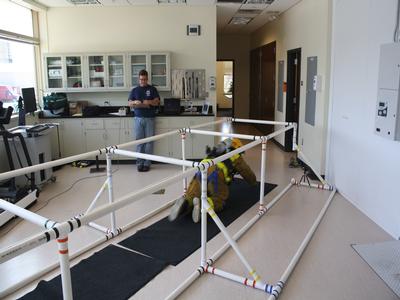Escape Rope Performance and Design in Fireground Applications
Summary
Funding provided by: Department of Homeland Security, United States Fire Administration - Assistance to Firefighters Grant Program: Fire Prevention and Safety Grant
Fire escape rope systems provide a critical lifeline for firefighters who are trapped by fire or structural compromise on elevated floors. Fatalities and severe injuries have occurred when firefighters attempt to jump to safety from as low as the third floor when reliable escape rope systems are not available. Despite this fact, the escape rope systems under legacy versions of NFPA 1983 were not required to be tested in conditions that are representative of the likely service environment, resulting in a lack of scientifically-based confidence in the fitness for duty of these systems.
This study developed a series of standardizable tests that allowed repeatable quantification of damaging conditions that escape rope systems may be subjected to in their fireground applications. In this series of tests, we studied the effect of elevated temperatures that may be experienced during a structure fire on the strength of the rope and available safe on-rope time as well as the effect of bend radius (typical of ledges or tied in knots) on dynamic load carrying ability of different ropes. Once this standard series of tests was completed, potential design alternatives that can provide a measure of protection for the rope systems were studied. Various thermal protection measures were tested including employing coatings and sheathing at the areas where highest temperatures were expected. Additionally, the ability of knots to absorb energy was characterized as a means to reduce dynamic loads on firefighters making an escape.
